Most of the people I know think I have a lot of fanzines, especially when they help me move and ask if all the boxes are going to be this heavy. (Even the movers I hire ask that!) Relative to how many fanzines have been produced, however, I have a pretty meager trickle, even if they do fill up three or so drawers and two or three more boxes. And of the ones I have, I’m usually missing, assuming the zines put out more than one or two issues, a “complete run.” The only long-running one of which I have a complete run, in fact, is Ugly Things, still going strong after having passed its 30th anniversary last year, and just having put out its 37th issue.
To those not immersed in fanzine culture, that might not sound like a schedule worth boasting about. How can a magazine that puts out about one issue a year (it’s actually been on a dependably regular two-a-year schedule for several years now) be considered a raging success story, you’re asking?
Believe me, it is – in fact, Ugly Things has outlasted virtually all of its competition in the longevity sweepstakes, though I’m sure there are one or two UK early rock’n’roll specialty publications I’m unaware of that might have been around longer. That’s one of the distinguishing trademarks of zines – they usually don’t publish regularly or last long. Their ridiculously fanatical niches almost guarantee that, and by their very definition, they’re run as sidelines by “fans,” not as money-making enterprises. Those short lifespans and limited press runs do mean that much crucial coverage they contain gets hard to find once they cease publication, especially as they’re not exactly likely to be carried by the local library (though fanzine archives are starting to be built, if still rarely, in some libraries).
This post is not going to attempt to list and describe every rock history fanzine of note – that’s a library’s job, perhaps (and the “job” of someone who’s paid to do that). Instead, I offer some thoughts on some personal favorites that might have passed you by, and could be hard to find even in this day of ebay and Internet auctions, though they don’t have such high monetary value.
Note too that this won’t cite every worthy rock history zine of note, including my two favorites (both of which are currently published), Ugly Things and the twice-a-year, five-issues-strong Flashback (in part because I’m a contributor to both of them, each of which is professional enough that they’re verging on becoming “real” magazines). Other omissions include some of the most respected and popular ones from earlier decades of rock history fanzinedom, like Bomp, Kicks, Forced Exposure, and Ptolemaic Terrascope. That doesn’t mean there isn’t worthy material in those. I wanted to concentrate on some of the more obscure ones that are getting in danger of being entirely overlooked.
If you do like the energetic ‘60s rock in which Ugly Things specializes, the focus of Here ‘Tis was rather similar, if a little more focused on US rock (though not exclusively, issue #8 featuring a cover story on Mott the Hoople). Like Ugly Things and in fact many zines, in their early days they started as a stapled-together, slim thing with extremely basic fresh-off-the-typewriter design, though that changed quite a bit as they got farther down the road. Its forte, like the best rockzines, was very in-depth features on cult rock musicians, often built around first-hand interviews. Standouts included a mammoth interview with Shadows of Knight/H.P. Lovecraft guitarist Jerry McGeorge (running 20 pages!), a nearly-as-long Q&A with Seeds keyboardist Daryl Hooper, and a 20-pager on the Fallen Angels. I’m actually not a Fallen Angels fan (or much of a Seeds one), but part of the measure of a good fanzine is that it can make a good story out of a band that might not be among your personal favorites.
By the time of its ninth issue (published in 1999), Here ‘Tis ran 78 pages. But that was as far as they got – and it had never come out too often or regularly, issue #4 (the earliest in my collection) having appeared back in 1988. Aside from that fourth issue, all I have is issues six through nine, which I had to pick up as and when they suddenly appeared – one of them I could only find in London, though it was published in the US. Take heart, however – you can still find issues 8 and 9, for the eminently reasonable price of $8.98, through the Sundazed Music store at http://www.sundazed.com/shop/index.php?cPath=53.
Also at the same page on the Sundazed store is issue #3 of another ‘60s-centered zine, Outasite, run by Greg Prevost (then-Chesterfield Kings singer). The first two issues, barely bigger in size than the palm of your hand, appeared in the early-to-mid-1980s, laid out with a haphazard enthusiasm equal to his passion for ‘60s garage and raw British Invasion sounds. These were crammed with capsule reviews of impossibly rare 45s and interviews with the legendary Barbarians drummer Moulty, the Chocolate Watch Band’s Sean Tolby, and – in a measure of how access to legends was easier in some ways many years ago – Byrds bassist Chris Hillman (who memorably divulged, “People think that we didn’t play on that first album. All you gotta do is hear that first album, and it’s us, because it’s so sloppy”).
If you think Here ‘Tis was published irregularly, it was outdone and then some by Outasite, whose second issue appeared around 1985, and third came out in…1997. And a fourth issue from 2000 (which I haven’t been able to find, unfortunately, and which is not carried by Sundazed) is, as far as I know, the last issue. But in the “interim” between the second and third issues, if that’s the right word, it did expand to conventional 8 ½ X 11 size and a length of more than 100 pages, including interviews with Ray Davies, Nancy Sinatra, Jorma Kaukonen, and Blue Cheer, as well as heroes of Prevost’s who didn’t make it big (like the Nightshadows). He didn’t abandon writing altogether, fortunately – his huge history of the Rolling Stones’ equipment (co-written with Andy Babiuk), Rolling Stones Gear, came out this year.
The zines hailed so far all have a general 1960s focus. Some good ones, however, had a far more specialized regional one. Such as the short-lived Cream Puff War, which lasted just two issues (spread two years apart) in the early 1990s. In that time, however, editors Jud Cost and Alec Palao conducted groundbreaking interviews with major early San Francisco rock acts who had never been interviewed or investigated with such depth, including the Great Society (Grace Slick’s pre-Jefferson Airplane group), the Charlatans, the Chocolate Watch Band, the Vejtables, and the Mojo Men. Issue #1 even came with a flexidisc of the Final Solution (a spinoff band of the Great Society), whose story was naturally told in the issue itself; the one-sided flexi remains their only released recording.
It was a disappointment that such a zealously assembled zine came to a halt so quickly. But in a sense both editors continued their work as liner note writers and researchers for numerous CD reissues assembling the music of early San Francisco cult rockers, often featuring previously unreleased (and indeed previously unknown) tracks. In some cases, this allowed them to clarify, correct, and expand upon the features they’d done on some of these musicians in Cream Puff War. This is not an uncommon outgrowth of zinedom, incidentally, with the editors of Kicks, for instance, going on to run Norton Records, and Bomp’s Greg Shaw transferring his focus to labels putting out both reissues and records by new bands.
A couple of years ago, by the way, a friend of mine was selling some of his archives at a local record swap. As I was helping him set up his table, someone came by and asked how much an unpriced copy of the first issue of Cream Puff War was selling for. Before I could say anything, my friend said he’d let it go for a dollar. It’s worth at least ten and perhaps more, but hopefully the buyer appreciated his bargain.
Another ‘60s zine with a strong regional focus was Doug Hanners’s Not Fade Away, subtitled “The Texas Music Magazine.” As with Cream Puff War, a few decades down the line, a lot more is known and easily researchable about Texas ‘60s bands, even those that never had a hit or never made much or any impact beyond the state. Back in the early 1980s, however, this was the only place you could find that info, in part because Hanners spoke at length to principals from some of the best Texan bands. Issue #3 (I’m not sure there were any issues after that) had a big interview with “Mouse,” aka Ronnie Weiss, of Mouse of the Traps (of “A Public Execution” fame). There was another with Carl Becker, who ran the J-Beck and Cee-Bee labels, generators of some of the best garage/psych of the era, especially on recordings by teen wizards Zakary Thaks. So impressed was Eva Records with Not Fade Away’s interview with the leader of Kenny & the Kasuals that they printed the entire thing on the back of one of their compilations of the group – which, these days, might be easier to find than the actual issue in which it appeared.
Single-artist-centered fanzines tend to be overly gushing in praise of their subject, as, again, you might expect if someone’s enough of a fan to start one. Some, however, have done a great deal to document an artist surely in need of exposure and hard information. The best of these was What Goes On, dedicated to the Velvet Underground. When its first issue came out in 1978, the VU cult, though rabid and quite large, wasn’t anything near as big as it is today. In parallel with the VU’s following, however, What Goes On quickly grew from an eight-page-stapled-together job to a pretty good-looking 56-page one by issue #3 (published in 1982). By that time it had inside tracks to some pretty inside interviews, including chats with Andy Warhol, Nico, and early VU associate Tony Conrad.
In common with some other zines here, however, What Goes On ran out of some steam despite high quality and (for a zine) a wide base of support. Only two more issues came out, and those not until 1990 and 1996 (a 1986 compilation issue of sorts did add a useful discography/filmography). Frustratingly, a lengthy interview they did with Sterling Morrison – one of the first he ever gave post-VU — was never published. I know, because I volunteered to transcribe much of it. More VU coverage was offered by the perhaps-too-plainly-titled-for-easy-indexing The Velvet Underground zine, whose five issues (from 1993-1996) were highlighted by a long Doug Yule interview in #3.
Though it never outgrew a basic 14-page format, one fanzine-verging-on-newsletter I liked, in part because its subject was never exactly fashionable among the underground, was Jackie, published by the Jackie DeShannon Appreciation Society. It might not have had much in the way of hard inside information and interviews, but it at least did a lot to document the many songs she wrote that were covered by other artists. And it came out pretty frequently for a while – I have issues 6 through 20 (though I missed #16 somehow), all of which gushed forth between 2001 and 2007. Like some other single-artist zines (such as What Goes On), it also offered rarity compilations that, while not the kind of things you could find in any store, did a lot to fill in discographical gaps that were almost impossible for the average collector to find, due to both their rarity and expense.
An outstanding one-shot production along these lines was Fairportfolio, which unlike virtually every other fanzine was written and compiled by an insider, not an outsider. Author Kingsley Abbott was a close friend of the band in their early days, and the 64-page production features not just his personal memories of how they formed, recorded, and performed in 1967-69, but also some memorabilia that only he had access to, like handwritten set lists (including some songs Fairport never recorded). I was pretty fortunate to find this shortly after it was published in 1997 (I’m pretty sure I only saw it once), and it must be nigh-on-impossible to locate today. Don’t despair, however; a lengthy article with similar text, quality illustrations, and additional material that basically adopts the essence of Fairportfolio was published just a few months ago in Flashback #5.
Even some mediocre one-artist zines have their uses. Yardbirds World, a 110-pager from 1989 (actually a compilation of a few issues of the original Yardbirds World fanzine), was no more elaborately designed than a typewritten college paper, and even then contained more than its share of typos and misspellings. Much of its research into studio and radio sessions has been superseded by more definitive efforts. Yet in the midst of this is a 14-page interview with Jane Relf – sister of Yardbirds lead singer Keith Relf, and singer (alongside Relf and Yardbirds drummer Jim McCarty) in the original lineup of Renaissance. If ever there was another printed interview with Jane Relf, let alone one of this length, I’m not aware of it.
Looking at the price tag, I see it sold for an outrageous $21.95. (Puzzlingly, there are two price tags – one from a now-defunct retail chain and one from a distributor.) I’ve gotta think I got this out of a box of severely discounted stale stock, or at the very least with store credit; I might be a big Yardbirds fan, but I’m not sure I would have paid that much for this. As a bonus, my copy was signed by Jim McCarty – though I’m guessing all copies were signed by Jim McCarty.
Then there are those zines that seem to get off to a promising start and promptly vanish. I liked Breakthrough, a pretty densely packaged 52-pager from 1984 with contributions by some of the top names in early rock history fandom. Most impressive was a long interview with Richard Tepp (of cult ‘60s garage rockers Richard & the Young Lions) and a detailed article on the Myddle Class, New Jersey pop-garagers who headlined the first official Velvet Underground gig in late 1965. All for the (even in 1984 money) eminently reasonable price of $2.00. And then…nothing.
There are also those zines in which you’ll find something of great value you’d never expect them to contain. Pawing through a box of very low-priced “get-rid-of-these-by-any-means-possible” odds and ends at Sub Pop’s Seattle retail store in 1997, I stumbled across an issue of Feminist Baseball with a huge interview with…Randy Holden, guitarist in a succession of ‘60s surf/garage/psych/early metal bands, from the Sons of Adam and the Other Half to Blue Cheer and Population II. I’d been a fan since finding the Other Half album in 1983, but hadn’t been able to find out anything about Holden. As far as I know, this was the first extensive interview ever done with him. (I believe I did the second just a bit after finding this zine, for my book Urban Spacemen & Wayfaring Strangers: Overlooked Innovators & Eccentric Visionaries of ‘60s Rock. It’s very hard to be first, as I’ve found out on repeated occasions.)
I’m all for feminism and baseball, but would you expect to find this in a zine titled Feminist Baseball? But there it was, in issue #14, spring/summer 1995, for a buck or two. I don’t remember seeing it before I stumbled upon it, and I don’t remember seeing it since.
Do I read anything besides ‘60s rock zines, you might be wondering at this point? Well, that’s most of what I collect as far as rock zines go, but there are some others I read, and one for which I even have a complete run. Let’s close with a hand for Chin Music, which put out seven issues between 1997 and 2004. Its focus was the unlikely crossover between baseball and alternative rock music, two institutions that most people would think had as little in common as…well, feminism and baseball.
But Chin Music did its best to bridge that gap, asking alternative rock icons like Guided By Voices and Maximum Rock’n’Roll editor Tim Yohannon about baseball, and actual major league baseball figures like San Francisco Giants pitcher Sean Estes about rock music. Even if no interviews were involved, major league baseball was written about with an irreverent punk rock attitude you’re simply not going to find in your daily paper or ESPN. Nor will you find any sports magazines with this kind of cover image, which – as almost all Chin Music readers would immediately know, but relatively few general sports fans (or general magazine editors) would suspect – satirized the cover of Roxy Music’s 1974 LP, Country Life:
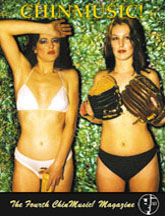
Back issues of Chin Music are still available through chinmusic.net.
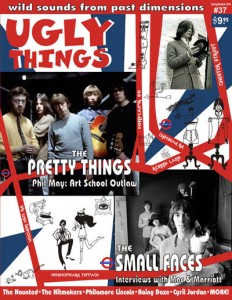
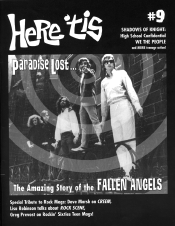
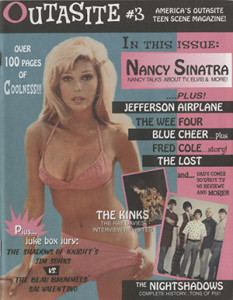
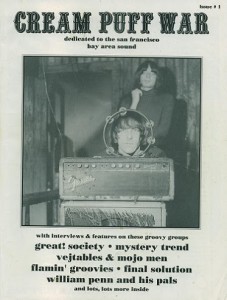
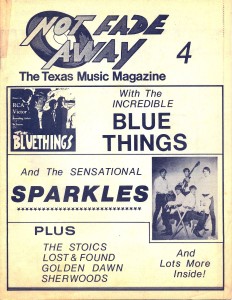
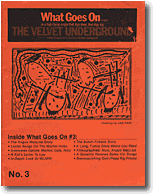
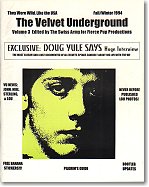
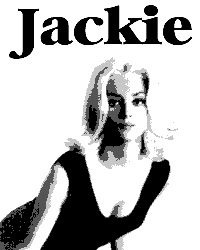
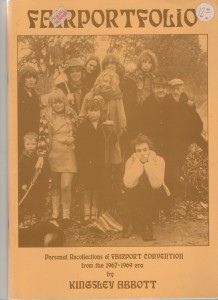
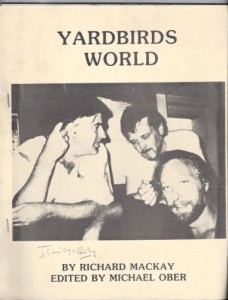
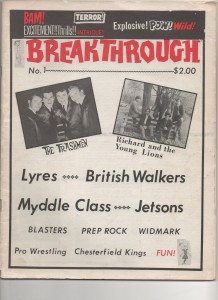
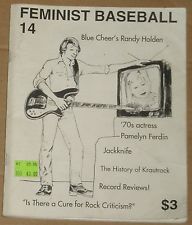
There was a ModernLovers/Jonathan Richman zine that ran a few issues (that I never saw, only heard about) in the late 80s/early 90s. I contributed a photo of a 13-year-old Jonathan doing the twist, but as far as I know they never pubbed another issue, so no one got to see the photo.
I never saw that one. Here’s a place to note that although it wasn’t exactly a fanzine, when he was a teenager in the late 1968, Richman contributed a story on “New York Art and the Velvet Underground to the underground paper Vibrations. Then in December 1969, as part of a Fusion magazine poll of the best albums of the 60s, Richman (whose name was incorrectly given as Richmond) picked the first two Velvet Underground LPs as his first and second choices. He also cited no less than seven VU songs in his Top 20: ‘There She Goes Again,’ ‘Heroin,’
‘All Tomorrow’s Parties,’ ‘I Heard Her Call My Name,’ ‘Jesus,’ ‘Candy Says,’ and ‘Foggy Notion.’ His last choice was particularly extraordinary, considering the VU’s version of that song wouldn’t be officially released until 1985.
In fact, Jonathan was a friend of the editor, John Kriedl, of VIBRATİONS and was a regular contributor, including in one instance, a 4-page insert section (newsprint I think) all written and illustrated by Jonathan. It definitely wasn’t a fanzine. It was a magazine that could easily be purchased at a variety of outlets. Jonathan used to take many photos of bands that played in Boston in the late 60s, and some may have appeared in the magazine. He was an excellent photographer and definitely took pics of the Velvets that I saw at the time.
I use to have both items you mention. The guy that did that Jonathan fanzine told me that he also had that 4-page insert that I mentioned. He also did (or was going to do) a comp of live Jonathan songs over the years.
There were three issues of the JR fanzine. I stapled every issue by hand!
…and I promise to not let that photo out of my archives! Thanks for the trust…
I had to go digging through my ‘zine shelves to ascertain my memory, but Greg Prevost put out at least one more issue, #4, in 2000. Stories include Connie Stevens, Mark Lindsay, Don Grady, Jan & Dean, Sky Saxon, Emitt Rhodes, Randy Holden, ? & the Mysterians, Captain Beefheart, Fabian, and many more. Don’t know if he published any more after that one though.
You’re right — and according to the one online reference I found, it ran 132 pages. I’ve updated my post to note this. Issue #3 is available through Sundazed’s website, but unfortunately issue #4 is not.
All these are nice, but denim delinquent despite its lack of ‘scholarly’ histories of the bands was the most fun and most essential.